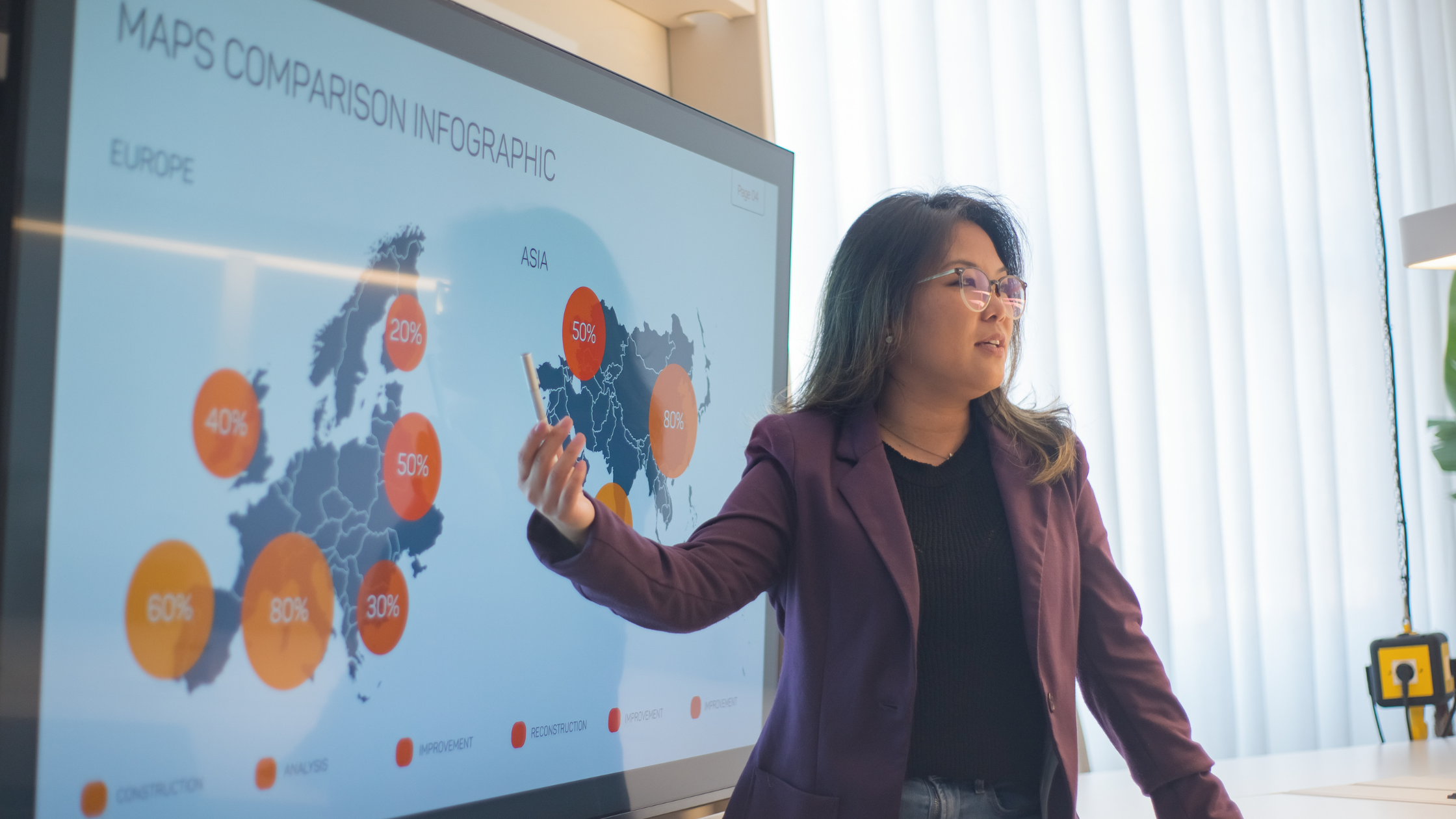In Today’s World data integration stands as a cornerstone in propelling organizational growth strategies amidst the contemporary business milieu. With the Common influence of digital transformation and the advent of Industry 4.0, businesses are witnessing a paradigm shift in operational paradigms. This shift towards digitization necessitates a deeper reliance on interconnected systems to drive efficiency and innovation.
However, alongside the benefits of interconnectivity come formidable integration challenges, stemming from the diverse array of adversaries encountered in the modern business ecosystem. Moreover, as organizations increasingly rely on interconnected systems, the complexity of integration hurdles escalates.
This necessitates proactive measures to effectively navigate through these challenges and capitalize on the opportunities presented by data integration. By adopting agile integration strategies and leveraging emerging technologies such as cloud computing and artificial intelligence, businesses can streamline their integration processes, enhance operational efficiency, and gain a competitive edge in the ever-evolving business landscape.
Let’s explore the challenges and how organizations can vote. Most importantly, we will explore the emerging technology trends that are reshaping data integration.
Current Fact Of data Integration :
In today’s integration landscape, Electronic Data Interchange (EDI) and modern data integration methods are fundamental for structured data exchange among businesses, for which Businesses that want to future-proof their operations. While EDI has long been the bedrock of this exchange, contemporary methods now accommodate diverse data types and formats, mirroring evolving business needs in an interconnected world.
However, alongside these advancements, businesses face significant integration challenges. Legacy systems coexist with the demands of Industry 4.0, creating a complex environment. The convergence of technological innovations in manufacturing risks forming data silos, reverse information flow and operational efficiency.
Addressing these hurdles, demands strategic utilization of insights and innovative integration technologies including API-based integration, IoT integration, AI and machine learning integration, cloud-based integration, and blockchain integration. By embracing these trends and fostering innovation, organizations can effectively navigate modern data integration complexities and maximize data asset potential.
Trends in data integration :
Emerging Trends in Data Integration is undergoing significant transformation driven by digital transformation imperatives. Key trends such as the rise of application programming interface (API) ecosystems are revolutionizing communication between diverse applications, facilitating seamless data exchange and interoperability.
Moreover, there’s a growing intensity on agile integration methodologies, empowering businesses to swiftly adapt to evolving market dynamics and extract real-time insights from disparate data sources for informed decision-making.
Additionally, the integration of AI and machine learning techniques is enhancing automation and intelligence capabilities, leading to predictive and adaptive integration solutions. Cloud-native integration architectures are gaining traction, offering scalability, flexibility, and accessibility benefits.
To maintain a competitive edge in the evolving data integration landscape, organizations must understand and leverage these emerging trends. By embracing innovation and staying abreast of market developments, businesses can unlock new opportunities and drive sustained growth in the digital era.
API Based Integration :
APIs serve as crucial intermediaries, facilitating seamless communication and data exchange between diverse software applications and systems. As mentioned by Brenton House the future of data integration is further shaped by the increasing adoption of API-based integration methodologies.
Standardized interfaces provided by APIs streamline the process of data exchange, promoting interoperability across various platforms and technologies. This interoperability not only enhances efficiency but also enables businesses to integrate disparate technologies seamlessly, leading to consolidated operations and enhanced collaboration across organizational units.
Moreover, the evolution of APIs is paving the way for advanced integration capabilities, such as event-driven architectures and microservices-based approaches. These innovations enable real-time data processing and enhance agility, allowing organizations to respond rapidly to changing market demands and emerging opportunities.
By embracing API-based integration and leveraging the evolving landscape of APIs, businesses can unlock new levels of connectivity, efficiency, and innovation in their data integration strategies, positioning themselves for success in the digital age.
IOT Integration :
The future of data integration depend on the rapid growth of the Internet of Things (IoT), which connects countless devices and generates vast data volumes. This data offers valuable insights into customer behavior and market trends.
Seamless integration with existing systems is essential to fully leverage IoT-generated data for informed decision-making. By harmonizing IoT data with core business systems, organizations can gain comprehensive insights and drive strategic initiatives.
Furthermore, the convergence of IoT with advanced analytics, AI, and cloud computing is revolutionizing data integration. Real-time processing and predictive analytics empower proactive decision-making. Embracing IoT integration allows businesses to unlock the transformative potential of connected devices, gaining a competitive edge in the digital landscape.
Machine learning and AI Integration :
Aa Per Research Conducted by DataForest Artificial intelligence (AI) and machine learning are reshaping the landscape of data integration, offering transformative capabilities in automation, workflow optimization, and advanced data analysis.
These technologies empower organizations to extract actionable insights from large datasets, predict trends, and make informed decisions based on real-time information. By leveraging AI-driven analytics, businesses can swiftly adapt to market changes, mitigate risks, and capitalize on emerging opportunities.
The integration of AI and machine learning into data integration processes enables organizations to achieve greater efficiencies and competitive advantages. As these technologies continue to advance, they will facilitate autonomous data integration, self-optimizing systems, and predictive analytics capabilities, driving innovation and differentiation in the digital era.
Embracing AI-powered analytics positions businesses to thrive in a data-driven landscape, unlocking new opportunities for growth and success.
Cloud Based Integration :
According to Nilay Rai, Cloud-based integration solutions are shaping the future of data integration by offering scalability, flexibility, and enhanced accessibility crucial for navigating dynamic market landscapes.
These solutions enable seamless expansion or contraction of resources based on organizational needs, ensuring optimal performance and cost efficiency. Transitioning from traditional on-site integration to cloud-based solutions signifies a paradigm shift, empowering businesses worldwide to adapt to evolving requirements, reduce infrastructure costs, and mitigate complexities associated with on-premises deployments.
Furthermore, cloud-based integration solutions foster greater collaboration and agility, enabling organizations to respond rapidly to market changes and innovation opportunities. Embracing these solutions empowers businesses to accelerate digital transformation initiatives, drive innovation, and gain a competitive edge in today’s dynamic business landscape.
Blockchain Integration :
Blockchain technology is poised to revolutionize data integration with its core features of security, transparency, and decentralization. By ensuring secure and transparent data exchange, blockchain enhances data integrity and mitigates the risk of unauthorized access or tampering.
Its smart contracts and distributed consensus mechanisms automate agreements and validate transactions, fostering trust and reliability in data exchanges.
Incorporating blockchain into data integration processes establishes a robust foundation for secure and transparent solutions, minimizing the risk of fraud or manipulation.
This technology’s potential spans industries, from supply chain management to finance, driving innovations and collaboration in the digital economy. Embracing blockchain in data integration strategies enables organizations to enhance security, foster transparency, and seize new opportunities for growth.
Integration Platforms for services :
Integration Platform as a Service (iPaaS) is reshaping data integration by providing businesses with a unified platform within a Software as a Service (SaaS) framework.
This platform-driven approach, supported by robust APIs, offers flexibility, scalability, and agility to tackle complex integration challenges in today’s digital ecosystem. iPaaS empowers organizations to streamline workflows, enhance collaboration, and accelerate innovation, driving efficiency and competitive advantage.
By integrating iPaaS into data management strategies, organizations can leverage the benefits of cloud computing and SaaS solutions, reducing infrastructure costs and simplifying integration processes.
As iPaaS continues to evolve, businesses can stay ahead of the curve, capitalize on emerging opportunities, and unlock new levels of efficiency and innovation in their data integration initiatives.
Hybrid integration Platforms :
Hybrid Integration Platforms (HIPs) are revolutionizing data integration by bridging the gap between on-premises and cloud systems, catering to organizations operating in hybrid IT environments. With a comprehensive suite of integration capabilities including API management, data integration, and event-driven architecture, HIPs streamline processes and facilitate real-time data exchange across diverse environments.
Equipped with pre-built connectors and robust security features, HIPs ensure compatibility and protect against cyber threats, enhancing data integrity and safeguarding sensitive information.
Embracing HIPs empowers organizations to harness the full potential of their data assets, driving innovation and agility in an increasingly interconnected world. As HIPs evolve to meet the changing demands of modern businesses, organizations can expect new opportunities for collaboration, accelerated digital transformation, and a competitive edge in today’s dynamic marketplace.
To Your Knowledge :
The business of data integration is undergoing rapid evolution, primarily fueled by the imperatives of digital transformation and Industry 4.0. Enterprises are increasingly dependent on seamless integration to surmount hurdles stemming from outdated systems, fragmented data repositories, and the burgeoning influx of data from diverse origins.
Emerging trends such as API-centric integration, incorporation of IoT data streams, infusion of AI and machine learning functionalities, adoption of cloud-native integration methodologies, integration of blockchain technologies, and the deployment of advanced integration platforms like iPaaS and HIPs are fundamentally reshaping how businesses conceptualize and execute data connectivity and governance strategies.
To flourish amidst this dynamic milieu, enterprises must wholeheartedly embrace these trends, allocate resources to continual learning initiatives, and prioritize the adoption of integration solutions that offer scalability and adaptability. By harnessing the potential of innovative technologies and strategic insights, organizations can effectively harness the power of their data, enhance operational efficacy, and sustain a competitive edge in the ever-evolving digital landscape.




